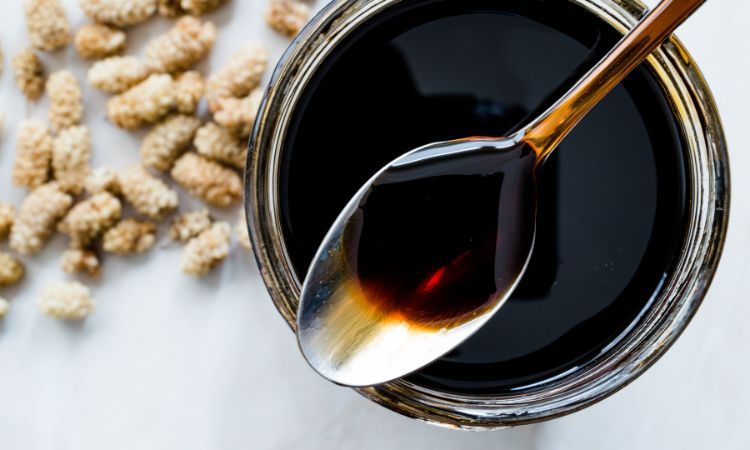Blackstrap molasses is a thick, dark syrup that is a byproduct of the sugar production process. It is widely used in various industries due to its rich nutritional content, including essential minerals such as iron, calcium, and magnesium. As a result, blackstrap molasses plays a vital role in diverse applications ranging from food and beverages to pharmaceuticals, animal feed, and industrial fermentation. In fact, the global blackstrap molasses market size reached a value of approximately USD 11.25 billion in 2023. The market is projected to grow at a CAGR of 2.8% between 2024 and 2032, reaching a value of around USD 14.45 billion by 2032. This growth reflects the increasing demand for natural sweeteners, functional ingredients, and its broad industrial applications.
This blog post provides a comprehensive analysis of the blackstrap molasses market, including segmentation, regional dynamics, market drivers, and the competitive landscape. It aims to offer valuable insights into the factors influencing the market’s growth and the opportunities and challenges that lie ahead for businesses and stakeholders.
Market Overview
Blackstrap molasses is primarily derived from sugarcane or sugar beets during the sugar extraction process. It is characterized by its intense flavor, dark color, and dense consistency, which makes it an ideal ingredient for use in various applications. While it has traditionally been a staple in food production, its applications have expanded significantly in recent years.
The growing popularity of natural, unprocessed ingredients in food and beverages is one of the key drivers behind the increasing demand for blackstrap molasses. Additionally, its applications in fermentation processes, pharmaceutical products, and animal feed are pushing the market to new heights.
As the market continues to grow, manufacturers are focusing on developing innovative products that cater to the specific needs of consumers across different sectors. This evolving market landscape makes blackstrap molasses a critical ingredient for industries looking to enhance their product offerings.
Market Segmentation
The global blackstrap molasses market can be segmented based on form, application, distribution channel, and region. Let’s take a closer look at these segments.
By Form
- Liquid Blackstrap Molasses: The liquid form of blackstrap molasses is the most widely consumed and utilized. It is commonly used as a natural sweetener in food and beverages, as a component in animal feed, and in fermentation processes. The liquid form’s versatility and ease of use in various manufacturing processes make it the preferred choice for most applications.
- Powdered Blackstrap Molasses: Powdered blackstrap molasses is primarily used in products where a dry molasses ingredient is required, such as in some animal feed formulas or in specific types of baking. Its longer shelf life and easy transportability are key factors driving its demand in the powdered form.
By Application
- Industrial Fermentation: Blackstrap molasses is a vital component in industrial fermentation processes, particularly in the production of ethanol and other biofuels. The fermentation industry is one of the largest consumers of molasses, and as the demand for biofuels continues to grow globally, so too will the demand for blackstrap molasses.
- Food and Beverages: As consumers continue to seek healthier, more natural alternatives to refined sugars, blackstrap molasses has gained popularity in the food and beverage sector. It is used in baked goods, sauces, beverages, and confectionery, offering both sweetness and nutritional benefits.
- Pharmaceuticals: Due to its high mineral content, blackstrap molasses is increasingly being used in pharmaceutical formulations, particularly for its role in supporting bone health, iron deficiency, and overall wellbeing.
- Animal Feed: The high nutrient content of blackstrap molasses makes it a desirable addition to animal feed, particularly for livestock and poultry. It provides an excellent source of energy and essential nutrients, promoting better animal health and growth.
- Others: Other applications include the use of blackstrap molasses in cosmetics, personal care products, and as a soil conditioner in agriculture.
By Distribution Channel
- Offline: Offline sales channels, including direct sales and retail stores, remain an essential part of the distribution network for blackstrap molasses. Many bulk consumers, such as manufacturers and industrial users, prefer purchasing directly from suppliers and distributors.
- Online: With the increasing trend of e-commerce and online shopping, the online distribution channel is gaining momentum. The convenience of online platforms allows small businesses, consumers, and large corporations to easily access blackstrap molasses, driving its market growth.
Regional Analysis
North America
North America holds a significant share of the global blackstrap molasses market, primarily driven by high demand in food and beverage applications and industrial fermentation. The increasing focus on health-conscious eating, along with the growing popularity of plant-based and organic foods, has bolstered the demand for natural ingredients like molasses. The U.S. and Canada are expected to continue leading the market in this region.
Europe
Europe is another key region for the blackstrap molasses market, particularly due to the rising demand for biofuels and natural sweeteners in the food industry. The adoption of clean and sustainable energy solutions across the continent is also contributing to the market’s growth in this region.
Asia-Pacific
Asia-Pacific is anticipated to see the highest growth in the blackstrap molasses market due to the increasing demand for industrial fermentation products, particularly in countries like India, China, and Japan. The growing population and urbanization in these countries, along with a shift toward healthier eating habits, are major drivers of this growth.
Latin America
In Latin America, Brazil is a key player in the molasses market, where sugarcane production is abundant. The demand for blackstrap molasses in the food, beverage, and biofuel industries is expected to grow steadily in this region.
Middle East and Africa
The Middle East and Africa show moderate growth prospects, driven by rising food consumption and the development of the pharmaceutical industry in select countries. However, challenges related to supply chain logistics and regional economic conditions could affect growth in some areas.
Market Dynamics
SWOT Analysis
- Strengths: Blackstrap molasses is a nutrient-rich product that offers multiple health benefits, including high iron and calcium content. Its versatility in industrial, food, and pharmaceutical applications further strengthens its market position.
- Weaknesses: Blackstrap molasses is highly dependent on agricultural production and climatic conditions. Fluctuations in crop yields and supply chain disruptions can impact the market.
- Opportunities: The rise in plant-based diets, the shift toward natural sweeteners, and the growing demand for biofuels represent significant opportunities for market expansion. Additionally, new product innovations and sustainable practices could further drive market growth.
- Threats: The market faces potential threats from substitute products, such as artificial sweeteners and other sugar alternatives. Additionally, environmental factors such as droughts or flooding could disrupt the supply of sugarcane and beets.
Porter’s Five Forces Analysis
- Threat of New Entrants: The blackstrap molasses market has moderate entry barriers due to the availability of raw materials and established supply chains. However, achieving scale and distribution efficiency poses challenges.
- Bargaining Power of Suppliers: Suppliers of sugarcane and beet crops have significant bargaining power as they control the primary raw materials for molasses production.
- Bargaining Power of Buyers: With growing demand across multiple sectors, buyers have increased bargaining power. However, the specialized nature of blackstrap molasses limits options for direct substitutes.
- Threat of Substitutes: While alternative sweeteners and sugar substitutes exist, blackstrap molasses remains unique due to its nutritional profile and suitability for industrial applications.
- Industry Rivalry: The blackstrap molasses market is competitive, with several large and small players vying for market share. Innovation and customer service are key factors that influence competition.






